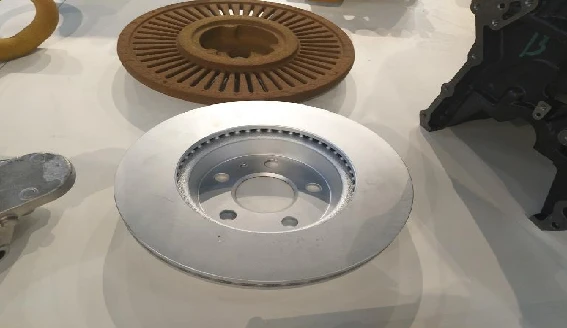The Application of Sand Casting Process
Sand casting, a traditional casting method, has stood the test of time due to its versatility and cost-effectiveness. It involves creating a mold from a mixture of sand, clay, and water, which is then used to produce metal parts. The applications of the sand casting process span numerous industries, making it a vital technique in modern manufacturing.
Manufacturing Industries
One of the primary applications of sand casting is in the manufacturing industry, where it is used to produce a wide variety of components. Industries such as automotive, aerospace, and machinery rely heavily on sand casting for developing engine blocks, housings, and other complex parts. The ability to create large quantities of intricate shapes with high precision makes sand casting an attractive option for mass production, especially in cases where the design is subject to change.
Aerospace Components
In the aerospace industry, where the demand for lightweight yet durable components is critical, sand casting plays a crucial role. Components such as turbine blades, structural frames, and various fittings are often produced using this technique. The ability to cast complex geometries provides significant advantages as it allows for reductions in weight without compromising structural integrity. Furthermore, the aerospace sector benefits from the reduced lead times and lower production costs associated with sand casting.
Art and Sculpture
Beyond industrial applications, sand casting is also a favored technique in the art world, particularly for creating unique sculptures and decorative pieces. Artists can use sand to create molds for their designs, resulting in one-of-a-kind castings that showcase intricate details. This artistic application highlights the flexibility of sand casting, as it can be adapted to meet the creative needs of different projects.
Tooling and Prototype Development
application of sand casting process

Sand casting is also extensively utilized in tooling and prototype development. Engineers often employ this method to create model parts for testing and validation before moving on to more expensive manufacturing processes. This advantage not only speeds up the product development cycle but also allows for adjustments based on real-world testing outcomes. By producing prototypes with sand casting, manufacturers can effectively mitigate risks associated with costly final production methods.
Advantages of Sand Casting
The advantages of sand casting are manifold. One of the most significant benefits is its low cost, making it accessible for both large and small-scale manufacturers. Additionally, the materials used—primarily sand and clay—are relatively inexpensive and widely available. Sand casting also allows for the production of large parts with a high degree of dimensional accuracy, which is essential in many applications.
Another key advantage is its flexibility in handling a wide range of metals, including aluminum, iron, and bronze. This versatility ensures that manufacturers can choose optimal materials based on specific requirements such as strength, weight, and resistance to corrosion.
Challenges and Innovations
While sand casting offers numerous benefits, it is not without challenges. Issues such as sand erosion, mold making complexity, and the need for post-casting processes like machining can arise. However, advancements in technology, such as the use of automation and improved quality control measures, are addressing these challenges. Innovations like 3D printing for mold creation are significantly enhancing the efficiency and accuracy of sand casting, allowing for even more complex geometries and reduced lead times.
Conclusion
In summary, sand casting remains a crucial process in various applications across multiple industries including manufacturing, aerospace, and art. Its cost-effectiveness, versatility, and ability to produce complex shapes make it an enduring choice for producing metal components. As technology advances, the potential for enhancing the sand casting process and expanding its applications continues to grow, ensuring its relevance in the future of manufacturing and artistry alike.
Post time:Ліст . 09, 2024 09:34
Next:Exploring the Benefits of Sanded Resin for Enhanced Finishing Techniques
